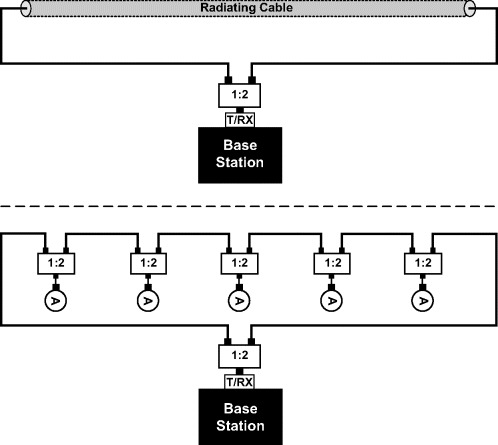11.8 Redundancy in Tunnel Coverage Solutions
It is often required to design a tunnel coverage solution that has to meet some level of redundancy so that in case parts of the system fail there will still be some service level for basic services, voice SMS, etc. Often, it is not required to have the same high quality of service during the fault scenario. The main concern is normally the active elements of DAS, but depending on the application it can sometimes be necessary to plan the tunnel coverage system so that the service will be on air, even if the radiating cable is cut.
The precise solution depends on many factors, ultimately the actual specification for the specific service for the project at hand. It will add cost to the project, especially if 100% redundancy is needed and a 1 + 1 redundancy is required; this will mean that no matter what part of the system fails, the service will still be at 100%. In practice this can take a parallel system, and so a 100% increase, doubling the required hardware and installation – and cost.
On the DAS part of the solution, the passive portion, one easy way of providing redundancy could be to feed the system, in a ‘ring’, as illustrated in Figure 11.18.
Figure 11.18 Examples of ‘Ring feed’ types of redundancy on a passive DAS

In this solution the same cell will be distributed in a ring type scenario in both directions. One must make sure, ...
Get Indoor Radio Planning: A Practical Guide for GSM, DCS, UMTS, HSPA and LTE, Second Edition now with the O’Reilly learning platform.
O’Reilly members experience books, live events, courses curated by job role, and more from O’Reilly and nearly 200 top publishers.

